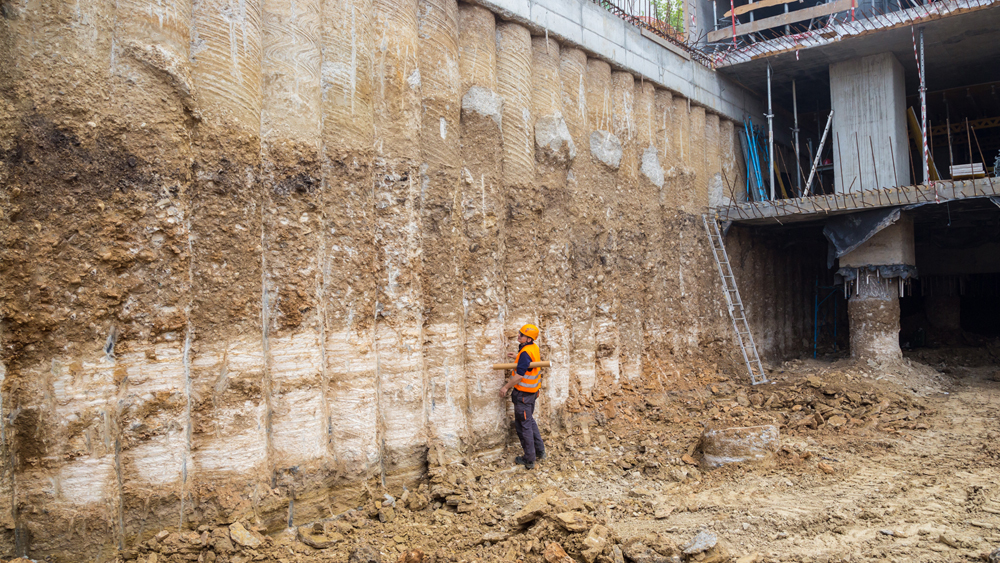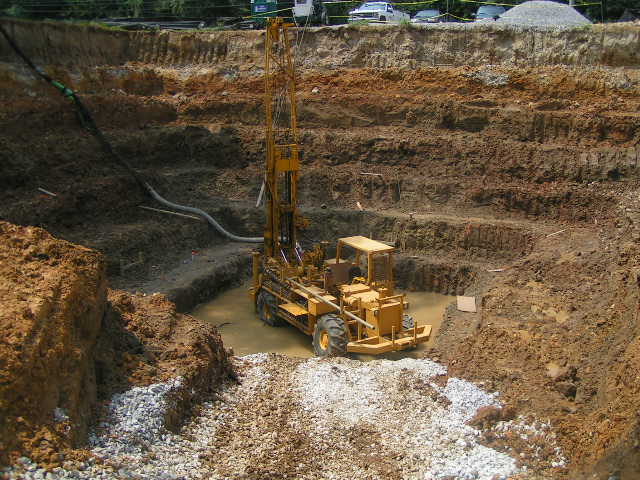Recognizing the Vital Role of the Geotechnical Industry in Modern Building Projects and Infrastructure Growth
The geotechnical industry is a keystone of modern building and facilities development, offering critical insights into soil actions that directly affect job results. Via sophisticated soil assessments and ingenious design solutions, geotechnical professionals not just guarantee structural stability however likewise address sustainability issues amid developing environmental standards.
Relevance of Dirt Analysis
Dirt evaluation plays an essential duty in the geotechnical sector, acting as the structure for educated decision-making in construction projects. Accurate dirt assessment is vital for figuring out the viability of a site for different types of frameworks, including residential homes, commercial structures, and bridges. By analyzing dirt composition, strength, thickness, and dampness web content, designers can expect prospective obstacles and minimize threats related to ground instability, disintegration, and negotiation.
The evaluation process commonly entails a collection of examinations and monitorings that give important information concerning the subsurface problems. This information educates the layout and building and construction procedures, making sure that structures are improved solid ground with ample assistance. Additionally, recognizing the soil account makes it possible for engineers to pick suitable building and construction techniques and products, enhancing source usage and decreasing expenses.
Along with making certain structural stability, dirt assessment adds to ecological sustainability. By identifying possible contamination or adverse impacts on bordering environments, designers can implement methods to protect these natural deposits. Overall, detailed soil analysis is important in the geotechnical field, underpinning the security, efficiency, and environmental duty of building jobs.
Key Geotechnical Techniques
A variety of crucial geotechnical strategies are employed to analyze and enhance the stability and performance of building websites. One fundamental method is dirt sampling and testing, which enables designers to determine the physical and chemical residential properties of the ground. This information is important for making informed decisions pertaining to structure design and building techniques.
One more necessary method is website characterization, which entails the thorough analysis of soil and rock conditions through techniques such as borehole exploration and in-situ screening. Techniques like Standard Penetration Examinations (SPT) and Cone Infiltration Examinations (CPT) give valuable data on soil strength and stratigraphy.
Ground renovation strategies, such as soil stabilization and grouting, are additionally crucial in improving the load-bearing capacity of weak dirts. These techniques can alleviate settlement and improve total website problems.
Furthermore, slope stability evaluation is essential for identifying possible landslide dangers and making sure the security of excavations. This analysis frequently employs mathematical modeling and restriction balance techniques to anticipate soil behavior under numerous problems.
Integrating these geotechnical techniques right into building and construction preparation not just maximizes task outcomes but additionally ensures the lasting sustainability of facilities advancement.
Influence On Building And Construction Security

Additionally, effective geotechnical design entails carrying out mitigation approaches for determined threats. This may include soil stablizing techniques, retaining frameworks, or drainage systems to minimize hydrostatic stress. By attending to these elements, building and construction groups can decrease the chance of accidents and improve employee safety.
Furthermore, continual monitoring of site conditions is critical during building. Geotechnical tools can offer real-time information pertaining to ground movement and security, permitting timely interventions when essential.
Basically, the geotechnical sector plays a pivotal function in safeguarding building tasks. By prioritizing ground stability and employing extensive analysis techniques, the geotechnical field not only shields the labor force but likewise adds to the longevity and integrity of built infrastructure.
Sustainability in Geotechnical Practices

In addition, geotechnical designers are currently using advanced technologies, such as geosynthetics, which enhance soil stability while decreasing the volume of material required. This not just preserves sources but also results in much less waste generation (tailings engineer). The combination of lasting style concepts into geotechnical engineering urges the usage of renewable resource sources in building procedures, additionally minimizing carbon exhausts
By performing these assessments, geotechnical specialists can establish strategies that alleviate unfavorable results, guaranteeing conformity with environmental policies. On the whole, the emphasis on sustainability within geotechnical techniques not only adds to the long life and durability of framework but additionally promotes an accountable strategy to land and resource monitoring.
Future Trends in Geotechnical Engineering
Technology is driving the future of geotechnical engineering, as arising methods and innovations improve the sector. The combination of innovative data analytics and fabricated intelligence is readied to transform website examination and risk analysis, making it possible for engineers to make more educated decisions based upon real-time information. The use of geosynthetic materials is acquiring traction, providing sustainable options that boost dirt security and lower ecological impact - geo tech engineer.
Another significant trend is the fostering of automated and robot systems for surveillance and building processes. These technologies not only improve accuracy yet additionally boost security by lessening human involvement in unsafe settings. In addition, the execution of Structure Information Modeling (BIM) in geotechnical design facilitates improved partnership among stakeholders, optimizing project shipment and minimizing costs.
As environment modification poses brand-new difficulties, the industry is significantly focusing on strength and versatility in design methods, guaranteeing framework can stand up to severe weather condition events. Ultimately, the ongoing fad toward sustainability will certainly drive development in eco-friendly i loved this products and methods, lining up geotechnical engineering with more comprehensive environmental objectives. Collectively, these fads will shape an extra effective, lasting, and resilient geotechnical imp source landscape for future jobs.
Verdict

The geotechnical market is a keystone of modern building and facilities advancement, providing important understandings into dirt actions that directly influence job results. engineer of record.Dirt analysis plays a vital function in the geotechnical market, offering as the structure for educated decision-making in building and construction tasks. Overall, thorough soil assessment is vital in the geotechnical area, underpinning the safety, effectiveness, and environmental obligation of building and construction projects
Construction safety is considerably influenced by geotechnical methods, as the stability and stability of the ground directly affect the general safety of a building site.In conclusion, the geotechnical sector is essential in modern construction and infrastructure growth, giving essential evaluations that guarantee structural honesty and security.
Comments on “Top Geotechnical Engineers for Cutting-Edge Dirt Evaluation and Structure Design”